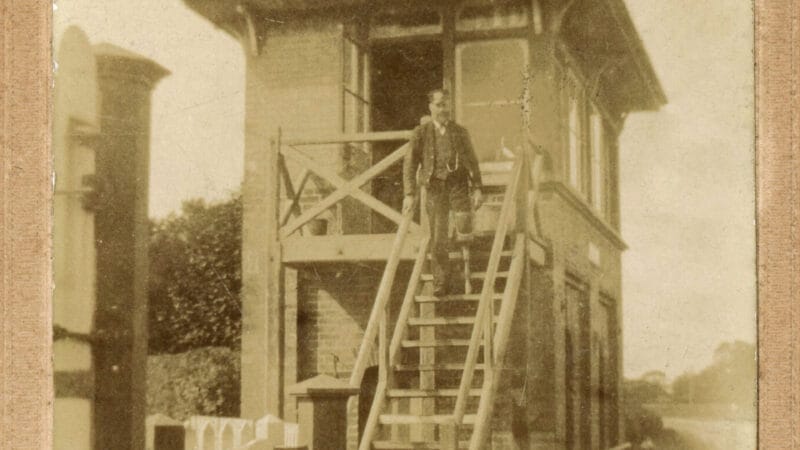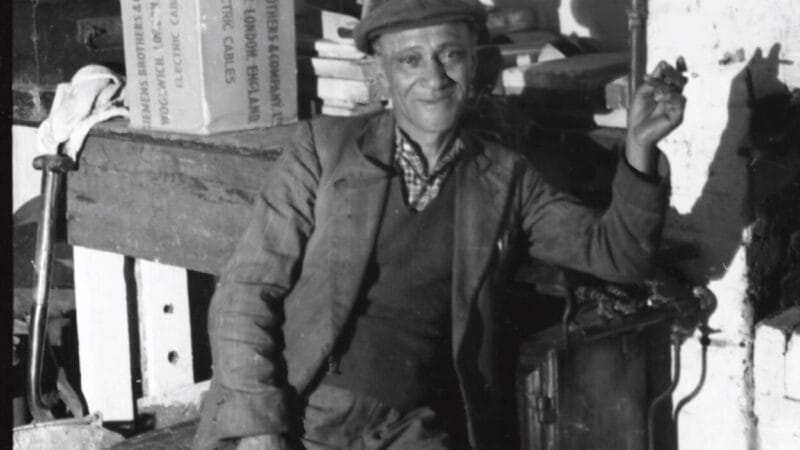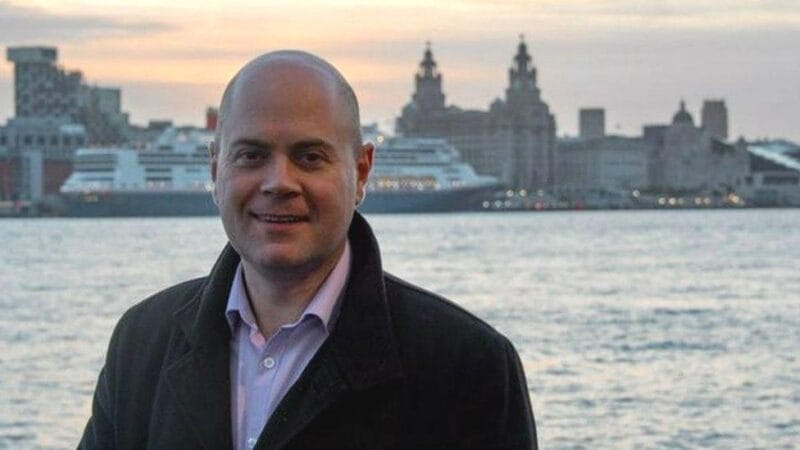Eerst gepubliceerd in Rail Magazine
Antonín Dvořák presenteerde ons een reeks klassieke meesterwerken: de New World Symphony, het American String Quartet, zijn Celloconcert en de opera Rusalka.
Muziek was een van de passies van de Tsjechische componist. Spoorwegen waren de andere.
Als kind zag hij de bouw van de nieuwe spoorlijn naar Praag, die vlak langs zijn ouderlijk huis in het dorp Nelahozeves liep.
Als volwassen inwoner van de hoofdstad leidde zijn dagelijkse ochtendwandeling hem langs de sporen die naar het Franz Josef-station leidden.
Later, toen hij in New York woonde, ontdekte hij dat de aanblik van een zware locomotief die zijn materieel door het hart van Manhattan trok, een effectief tegengif tegen heimwee bleek. Dvořák vertelde ooit aan een vriend dat hij "met plezier al mijn symfonieën had gegeven in ruil voor de uitvinding van de locomotief".
Ook de Parijse componist Arthur Honegger raakte gefascineerd door de locomotieven. Hij beschreef ze als “levende wezens … waar ik net zo van houd als anderen van vrouwen of paarden houden”.
In 1923 verwerkte hij hun geluid tot een muziekstuk voor symfonieorkest met zijn werk Pacific 231. Deze naam kreeg hij omdat de Fransen bij het beschrijven van de grootte van locomotieven de assen in plaats van de wielen als uitgangspunt namen.
Volgens Honegger weerspiegelt het werk “de rustige ademhaling van de stilstaande locomotief, de inspanning van het starten, de geleidelijke toename van snelheid en uiteindelijk een trein van 300 ton die zich met 190 km/u door de nacht slingert”.
Benjamin Britten raakte ook gefascineerd door het idee van een trein die door de duisternis rijdt, toen hij in 1936 de muziek componeerde voor de film The Night Mail. Deze film vertelt het verhaal van het reizende postkantoor dat liep tussen Londen Euston en Aberdeen, via Glasgow en Edinburgh.
De muziek van Britten is alleen te horen in de laatste minuten van de film, begeleid door het beroemde gedicht van WH Auden dat begint met "This is the Night Mail crossing the Border/Bringing the cheque and the postal order".
Britten gebruikte koper-, blaas- en slaginstrumenten om het geluid van een rammelende trein over het spoor na te bootsen, een fluitsignaal als de trein door slaperige dorpjes rijdt en een zware inspanning levert als de trein de hellingen van de Hooglanden oprijdt.
Maar het zijn niet alleen de krachtige expressies die de interesse van componisten wekken.
Heitor Villa-Lobos schilderde in Het treintje van de Caipira de lightraillijnen die tussen afgelegen plattelandsgemeenschappen in Brazilië liepen.
Hans Christian Lumbye markeerde de opening van de nieuwe lijn naar Roskilde met zijn Copenhagen Steam Railway Gallop.
In de jaren 80 dacht Steve Reich terug aan de reizen die hij als kind maakte tijdens de oorlog tussen New York en Los Angeles.
Hij realiseerde zich dat als hij als jonge Joodse jongen destijds in Europa had gewoond, zijn reis er heel anders uit had kunnen zien: hij werd vervoerd in een stel goederenwagons vol doodsbange gevangenen die naar een naziconcentratiekamp werden getransporteerd.
Hij verwerkte deze gedachten in een van zijn belangrijkste werken: Different Trains, waarin hij een strijkkwartet combineerde met opgenomen getuigenissen van sprekers, waaronder Holocaustoverlevenden en een gepensioneerde portier van een Pullman-treinstation.
Julia Winterson noemt in haar fascinerende boek Railways & Music nog tientallen voorbeelden van 'treinmuziek'.
Samen schreven de Strauss-families minstens tien spoorwegwerken. Berlioz schreef een cantate ter ere van de opening van de lijn Parijs-Rijsel-Brussel. Later verzorgde Michael Nyman de muziek ter ere van de start van de Franse hogesnelheidstreinen (TGV). Vivian Ellis' Coronation Scot werd een klassieker in de Engelse lichte muziek. En de meesten van ons kunnen nog wel een paar regels citeren uit Flanders en Swanns The Slow Train.
Waarom zijn componisten en spoorwegen zo’n goede match?
Net als een treinreis is een muziekstuk een reis, met een duidelijk begin en een duidelijk einde, met stops, starts en wisselende periodes van snelheid en traagheid daartussenin.
Een nette nummering is essentieel, waarbij de kopcodes dezelfde rol vervullen als de Köchel- en BWV-nummers die de werken van Mozart en Bach catalogiseren.
En treinen zijn muzikale objecten, waarvan het ritmische patroon gemakkelijk kan worden opgeroepen door percussie, de hoorns en fluitjes worden bespeeld door koper- en houtblazers en de weidse uitzichten vanaf een viaduct of een kustweg zijn veilig in de handen van de strijkers.
Soms hebben zelfs de omroepberichten op de stations een zekere muzikaliteit. Kijk maar naar de SNCF-klokken van Michaël Boumendil, een onmiddellijke en meeslepende oorwurm.
Is het een verrassing dat de componisten die ik ken de trein als hun favoriete vervoermiddel kiezen? Schrijf lijstjes van treinliefhebbers en klassieke muzikanten, zet ze in een Venn-diagram en ik durf te wedden dat de overlay aanzienlijk zal zijn.
Petroc Trelawny zond op 27 september een uitzending uit vanuit LNER's Highland Chieftain, als onderdeel van Train Tracks op BBC Radio 3. Zijn Cornwall – A Journey Through Western Lands (Weidenfeld en Nicolson) is nu verkrijgbaar en zijn Classical Music Puzzle Book (Ivy Press) verscheen op 9 oktober.


